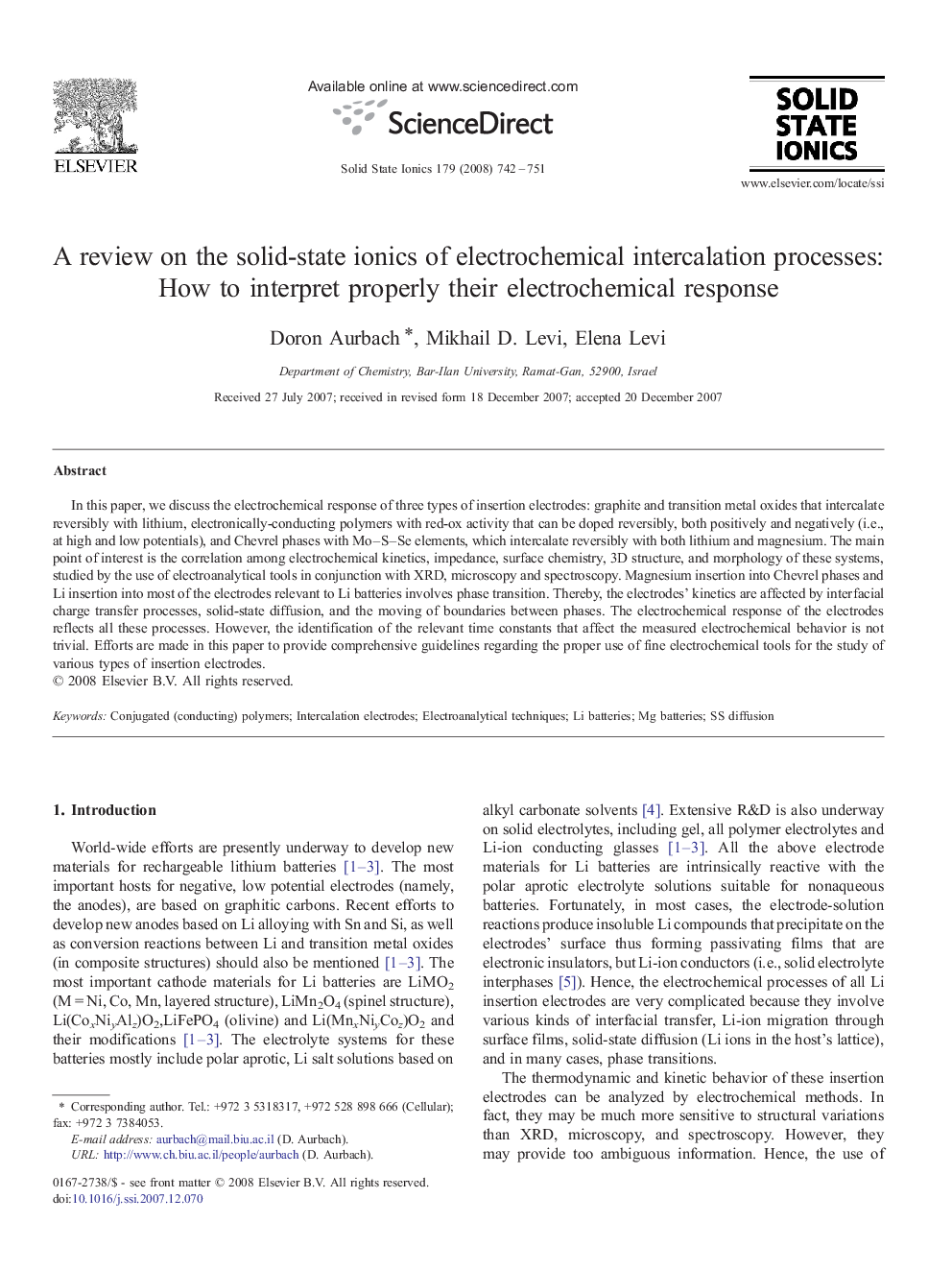| Article ID | Journal | Published Year | Pages | File Type |
|---|---|---|---|---|
| 1298695 | Solid State Ionics | 2008 | 10 Pages |
In this paper, we discuss the electrochemical response of three types of insertion electrodes: graphite and transition metal oxides that intercalate reversibly with lithium, electronically-conducting polymers with red-ox activity that can be doped reversibly, both positively and negatively (i.e., at high and low potentials), and Chevrel phases with Mo–S–Se elements, which intercalate reversibly with both lithium and magnesium. The main point of interest is the correlation among electrochemical kinetics, impedance, surface chemistry, 3D structure, and morphology of these systems, studied by the use of electroanalytical tools in conjunction with XRD, microscopy and spectroscopy. Magnesium insertion into Chevrel phases and Li insertion into most of the electrodes relevant to Li batteries involves phase transition. Thereby, the electrodes' kinetics are affected by interfacial charge transfer processes, solid-state diffusion, and the moving of boundaries between phases. The electrochemical response of the electrodes reflects all these processes. However, the identification of the relevant time constants that affect the measured electrochemical behavior is not trivial. Efforts are made in this paper to provide comprehensive guidelines regarding the proper use of fine electrochemical tools for the study of various types of insertion electrodes.
